 00:12:00
00:12:00
Learning English – Academic Writing – positioning yourself in the discussion section of Research articles
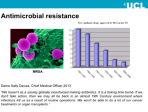 01:00:00
01:00:00
Harnessing the power of mobile phones and big data for global health
Infectious diseases rank among the gravest threats to human health alongside global warming and terrorism. New strains continue to evolve every year and can spread rapidly. The consequences can be devastating. The 1918 Spanish flu killed an estimated....
More details | Watch now 01:01:00
01:01:00
Genetic control and the mammalian radiation
To grow tissues in our body two key types of DNA control how, where and when to build essential proteins. Recent comparisons of mammal genomes show that instructions coding how to build proteins are similar across diverse species. In contrast the gen....
More details | Watch now 01:04:00
01:04:00
Communicating with light
Most of the data we generate and receive (whether emails, tweets, videos or mobile calls) are now carried by optical fibres, which use light to transmit vast quantities of information over trans-oceanic distances. The use of hundreds of wavelengths ....
More details | Watch now 01:08:00
01:08:00
Writing wrongs – Rachel Carson, Silent Spring
What role do literature, science and policy play in protecting the planet? Fifty years since the death of conservationist Rachel Carson, we look at her masterpiece Silent Spring, and ask: "What have we learnt? Listen to our panel of experts: author ....
More details | Watch now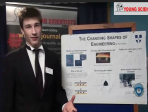 00:05:00
00:05:00
The Changing Shapes of Engineering
***** Winner! *****
Hal has been awarded the 2014 Geoset HighSchool Award for this excellent presentation about how non-circular shapes can have a very useful set of rotational properties. More details | Watch now 01:13:00
01:13:00
Targeting the human kinome: cancer drug discovery
This lecture discusses how the discovery of the Philadelphia chromosome provided the first example of a link between cancer and a recurrent genetic abnormality. This chromosomal translocation, which results in activation of the Abl protein kinase, re....
More details | Watch now 00:06:00
00:06:00
Radiation in Your Kitchen: Basic Microwave Oven Physics
They're awesome to have in the kitchen, but did you ever wonder how your microwave actually works? This is a quick introduction to the theory that makes our home microwave ovens possible. Here, Daniel covers the differences between microwave heati....
More details | Watch now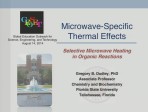 00:32:00
00:32:00
Part 3: Selective Microwave Heating of a Polar Reaction Substrate
In part three of this three part series, FSU chemist Dr. Gregory Dudley, summarizes the conclusions of ongoing FSU microwave chemistry research. He discusses the implications and future prospects of microwave research, addressing how other labs could....
More details | Watch now 00:30:00
00:30:00
Part 2: Selective Microwave Heating of an Ionic Reagent
In part two of this three part series, FSU chemist Dr. Gregory Dudley, discusses in depth the microwave chemistry research he's conducted in collaboration with FSU colleague Dr. Al Stiegman. The research outlines Friedel-Crafts substitutions, Aryl-Cl....
More details | Watch now 00:30:00
00:30:00
Part 1: Selective Microwave Heating Design and Theory
In part one of this three part series, FSU chemist Dr. Gregory Dudley, puts forth the controversy that surrounds microwave chemistry research, he outlines physical theory of microwave chemistry, and discusses the research teams central design hypothe....
More details | Watch now 00:02:00
00:02:00
Microwave Chemistry Introduction: Your dial goes up to 11
This is the introduction to a three part research presentation on microwave chemistry given by FSU chemist Dr. Gregory Dudley. Dudley reports on joint FSU research surrounding microwave chemistry and its previously unknown potential in lab applicatio....
More details | Watch now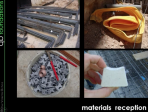 00:11:00
00:11:00
Quality in Building: Foundations
Work Inspection in a Construction Process. The work inspection at foundations
More details | Watch now 00:09:00
00:09:00
The digital media landscape
 00:12:00
00:12:00
Web Design. Proximity Principle
 00:11:00
00:11:00
Web Design. Similarity Principle
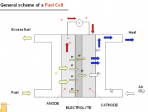 00:05:00
00:05:00
Fuel Cells: Main Aspects
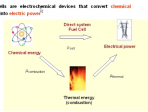 00:08:00
00:08:00
Electrochemical Basis of Fuel Cells
 00:13:00
00:13:00
Leadership and ethics
 00:12:00
00:12:00
The case of Danube University Krems
 00:11:00
00:11:00
Sakai 3 / Open Academic Enviroment
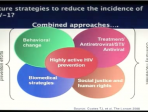 00:31:00
00:31:00
HIV, a Discovery Highlighting the Global Benefit of Translational Research
The fantastic progress made in medicine led the scientific community to hope about the complete eradication of infectious diseases in the middle of the 20th century. The sudden emergence of AIDS in the early 80's cruelly reminded us that this dream ....
More details | Watch now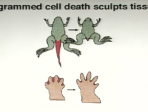 00:33:00
00:33:00
Programmed Cell Death in Development and Disease
Programmed cell death (often referred to as apoptosis) is a normal feature of animal development and tissue homeostasis. The misregulation of cell death has been implicated in a diversity of human disorders, including cancer, autoimmune diseases, he....
More details | Watch now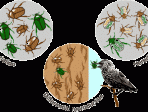 00:42:00
00:42:00
Natural Selection and the Future of Life
In his lecture Professor Christian Rene de DuvŽ gives a rough overview on the history of life starting about 3.5 billion years ago with the first cells up to the appearance of the first primates 70 million years ago, and he states that all organisms....
More details | Watch now 00:45:00
00:45:00
On the Genetic Basis of Morphological Evolution
Darwin's theory of evolution states that variation of the shape and pattern of the adults rather than the embryos are the basis for natural selection. In order to understand how morphological variation arises, it is important to identify the genes th....
More details | Watch now 00:28:00
00:28:00
DNA between Physics and Biology
The association of DNA with water is known since the deciphering of its double helical structure by X-Ray diffraction in 1953 (Watson, Crick, Wilkins and Franklin). However the power of DNA for organizing water seems to go far beyond the direct fill....
More details | Watch now 00:32:00
00:32:00
Cultural Values of Scientific Knowledge
The acquisition of scientific knowledge largely depends on the availability of appropriate research approaches and methodologies. Novel scientific knowledge represents cultural values. On the one hand, it enriches our world-view with impacts on our....
More details | Watch now 00:31:00
00:31:00
The Future of Life
Ever since its first appearance, more than 3.5 billion years ago, life has evolved without guiding plan, propelled by: 1) its own intrinsic properties, which, with the help of outside energy, provided the necessary driving force; 2) accidental geneti....
More details | Watch nowFrom the Structure of the Ribosome to the Design of New Antibiotics
Structural studies of the ribosome exemplify the evolution of structural studies in cell biology from the early negatively stained images of macromolecular assemblies in whole cells, to a detailed atomic understanding of the mechanism of action of a ....
More details | Watch nowDiscovery of Nitric Oxide and Cyclic GMP in Cell Signalling and their Role in Drug Development
The role of nitric oxide in cellular signaling in the past three decades has become one of the most rapidly growing areas in biology. Nitric oxide is a gas and a free radical with an unshared electron that can regulate an ever-growing list of biolog....
More details | Watch now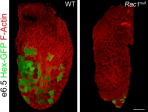 00:29:00
00:29:00
The Lability of the Differentiated State
Many classical studies have shown that cell fates become progressively restricted during development and that this restriction is typically irreversible. This has led to the dogma of the Stability of the Differentiated State: cells cannot typically ....
More details | Watch now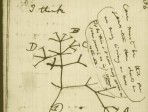 00:35:00
00:35:00
Updated Notions on Darwinian Evolution
Charles Darwin had based his theory of biological evolution on the observation that phenotypic variants of a given species can sometimes over-grow their parental population, and he attributed this to selective advantage, i.e., to the impact of natura....
More details | Watch now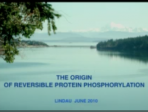 00:29:00
00:29:00
Protein Cross Talk in Cell Signaling
The main focus of the talk will be on signaling by tyrosine phosphorylation, which has been directly implicated in the regulation of cell growth, differentiation and transformation. External signals coming in the form of mitogenic hormones and growt....
More details | Watch nowSignals and Signalling Mechanisms in the Central Nervous System
Our brain is a network of about 10^11 neurons, which are connected by synapses. A neuron typically receives input from about 10000 other neurons, which can be either excitatory or inhibitory. The neuron integrates these inputs and generates an 'act....
More details | Watch nowInfections in the Etiology of Human Cancers
During the past century a number of chemical and physical risk factors for human cancers have been identified. Only relatively recently, mainly during the past 30 years, infectious agents have been identified as important human carcinogens. Besides....
More details | Watch now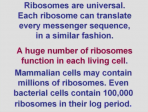 00:41:00
00:41:00
Climbing the Everest Beyond the Everest
The challenges associated with pursuing ribosomal crystallography can be described as a series of Everest climbing. At each step, when reaching the summit, a taller and more difficult one became exposed. Snapshots of this story will be described.__....
More details | Watch nowTelomeres and Telomerase in Human Health and Disease
Telomeres are the protective tips that stabilize the ends of chromosomes. The function of telomeres is to allow cells to divide while holding the genetic material intact. Telomeres contain specialized, simple repetitive DNA sequences that, together....
More details | Watch now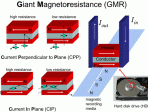 00:38:00
00:38:00
Humanity in the Cosmos
In the recent past, rapid scientific and technological developments have had tremendous impact on human society. Notably the pc, internet and mobile telephony changed the world and shrank our planet. These developments are vastly different from the....
More details | Watch now 00:31:00
00:31:00
From Millisecond to Attosecond Laser Pulses
A historical overview is presented of the experimental development of ever shorter laser pulses from 1960 to the present. Already in the early sixties nanosecond pulses were achieved and the entry into the picosecond domain was reached in the late s....
More details | Watch now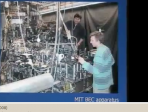 00:25:00
00:25:00
Role of Cortical Noise in Vision
Our brains are always generating electrical signals, even if we close our eyes, plug our ears, and lie in a warm bath. These signals are called cortical noise because they don't correlate with any sensation or thought of which we are aware. I will ....
More details | Watch now 00:36:00
00:36:00
The Individuality of Light Quanta
Light quanta are the fundamental units of radiant energy. When propagating freely they travel at the fastest attainable speed and live forever. These properties recommend them as the ideal messengers for communication of all sorts. Ordinary light ....
More details | Watch now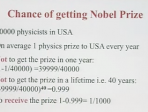 00:27:00
00:27:00
Which Way For Physics?
This talk describes a new approach to the problem of characterising physical reality, one with the potential to fill in gaps in the conventional understanding of nature. It is based on a different view from the usual one of structure at the finest l....
More details | Watch now 00:35:00
00:35:00
How Advances in Science are Made
How advances in science are made, and how they may come to benefit mankind at large are complex issues. The discoveries that most influence the way we think about nature seldom can be anticipated, and frequently the applications for new technologies....
More details | Watch now 00:44:00
00:44:00
The Impact of Big Science on Astrophysics
The Chandra and Hubble Telescopes are in space and each costs (through operations) several billion dollars. VLT is on the ground but over 20 years of operations will also cost in excess of a billion. They all fall therefore in the category of what ....
More details | Watch now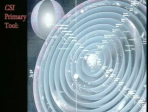 00:35:00
00:35:00
The Large Hadron Collider and the Super World
In the period 1990 to 2001 many powerful new astronomical observational facilities have become operational. Hubble Space telescope was launched in 1990; it was followed by the construction of Keck I in 1992 and Keck II in 1996, by the completion of....
More details | Watch now 00:40:00
00:40:00
The Beginning and Development of the Universe
By careful investigation of relic left on the cosmic scene we have very good evidence and constraints on what has occurred since the beginning of the Universe. This talk reviews the evidence including images and information from the very first light....
More details | Watch now 00:32:00
00:32:00
What Future for Energy and Climate?
We are using the planet's fossil fuel resources in a time which is very short compared to that of human evolution. In the same process we are changing the planet's climate and sea level, threatening the future of large segments of the global populat....
More details | Watch now 00:30:00
00:30:00
The Development of Particle Physics
Particle physics mainly developed after World War II. It has its roots in the first half of the previous century, when it became clear that all matter is made up from atoms, and the atoms in turn were found to contain a nucleus surrounded by electro....
More details | Watch now 00:29:00
00:29:00
Discovery of Superconducting Tunneling
I had the great fortune to receive a Nobel Prize in Physics for using electron tunneling to measure the energy gap in superconductors. In this talk I will recollect some of the events that led to this discovery and hopefully I will be able to convey....
More details | Watch now 00:32:00
00:32:00
The Optical Frequency Comb – a Really Versatile Tool
The Optical Frequency Comb concept and technology exploded in 1999-2000 from the synthesis of advances in independent fields of Laser Stabilization, UltraFast Lasers, and NonLinear Optical Fibers. The Comb was developed first as a method for optical....
More details | Watch now 00:29:00
00:29:00
Towards a Quantum Laboratory on a Chip
Microfabricated magnetic traps, waveguides, and other elements for the manipulation of ultracold atoms can be combined to form a quantum laboratory on a chip. Devices such as miniaturized atom lasers, atom interferometers, and atomic clocks have been....
More details | Watch now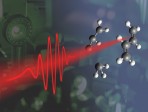 00:33:00
00:33:00
Cold Atomic Gases: the Intersection of Condensed Matter and Atomic Physics
During the past decade laser cooling and evaporative cooling of atoms have produced quantum degenerate gases both of bosons (Bose-Einstein condensates) and of fermions (gases with temperatures below the Fermi temperature). Such gases can provide ana....
More details | Watch now 00:34:00
00:34:00
From Spinwaves to Giant Magnetoresistance (GMR) and Beyond
Standing spinwaves and surface waves in layered magnetic structures can be used for the detection and quantitative evaluation of interlayer exchange coupling (IEC). Using this method antiferromagnetic IEC has been found in Fe/Cr/Fe layered structure....
More details | Watch now 00:37:00
00:37:00
Where Do Ideas Come From?
At many times in your scientific lives, you will hopefully have ideas - good or not so good- that will determine what you will do next. Where do ideas come from? My intention is to tell you where some of mine came from, and particularly those when I....
More details | Watch now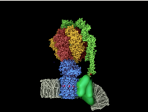 00:37:00
00:37:00
Generating the Fuel of Life
The lecture will be devoted to the topic of how the biological world supplies itself with energy to make biology work, and what medical consequences ensue when the energy supply chain in our bodies is damaged or defective. We derive our energy from ....
More details | Watch now 00:32:00
00:32:00
Tickling Worms: Surprises From Basic Research
Research, at least my research, has never been linear. I have found that my lab and I often double back on problems after years of inactivity or go off in entirely new directions as dictated by the work and peoples interests. This lack of direction....
More details | Watch now 00:31:00
00:31:00
Biological Evolution in the Context of Cosmic Evolution and of Cultural Evolution
After reconsidering the very long time periods in cosmic evolution, we will focus our attention to the evolutionary development of living organisms on our planet Earth. The genetic variants (mutations), which are occasionally produced, are alteratio....
More details | Watch now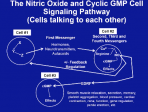 00:42:00
00:42:00
Discovery of Nitric Oxide and Cyclic GMP in Cell Signaling and Their Role in Drug Development
The role of nitric oxide in cellular signaling in the past three decades has become one of the most rapidly growing areas in biology. Nitric oxide is a gas and a free radical with an unshared electron that can regulate an ever-growing list of biolog....
More details | Watch now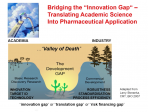 00:33:00
00:33:00
Structural Biology and its Translation into Practice and Business: My Experience
As a student in the early 1960s, I had the privilege to attend winter seminars organized by my mentor, W. Hoppe, and by M. Perutz, which took place in a small guesthouse in the Bavarian-Austrian Alps. The entire community of a handful of protein cry....
More details | Watch now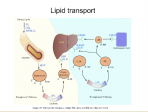 00:34:00
00:34:00
Structural Studies on Cholesterol Transport
Cholesterol has two essential functions in our bodies: It is an important component of cell membranes and it serves as the starting material for the synthesis of bile acids, steroid hormones, and other compounds. The human body obtains necessary cho....
More details | Watch now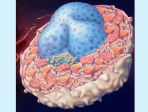 00:29:00
00:29:00
Membrane Proteins: Importance, Functions, Mechanisms
Biological membranes define and compartmentalize the cells of higher organisms. Consisting of membrane proteins and lipids, they are basically impermeable for ions and polar substances, so that electric voltages (_membrane potentialsî) and substanc....
More details | Watch now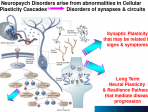 00:42:00
00:42:00
Short-term Synaptic Plasticity
Our brain is a network of about 10^11 neurons, which are connected via synapses. A neuron typically receives input from about 10000 other neurons, which can be either excitatory or inhibitory. The neuron integrates these inputs and generates an actio....
More details | Watch now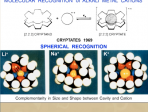 00:34:00
00:34:00
Towards Adaptive Chemistry
Supramolecular chemistry lies beyond molecular chemistry. It aims at implementing highly complex chemical systems from molecular components held together by non-covalent intermolecular forces and effecting molecular recognition, catalysis and transp....
More details | Watch now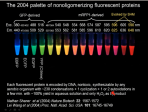 00:33:00
00:33:00
Molecules Against Cancer or for Long-Term Memory Storage
For cancer diagnosis and therapy, we are developing activatable cell-penetrating peptides (ACPPs), synthetic molecules with a novel amplifying mechanism for homing to diseased tissues. ACPPs are polycationic cell-penetrating peptides whose cellular ....
More details | Watch now 00:36:00
00:36:00
A Personal View of the History of Nuclear Magnetic Resonance in Biology and Medicine
In 1952, Felix Bloch and Edward Purcell were awarded the Nobel Prize in Physics for the description of the phenomenon of nuclear magnetic resonance (NMR). Over the years, NMR has been used in a wide range of fundamental studies in physics, and in the....
More details | Watch now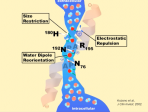 00:32:00
00:32:00
Aquaporin Water Channels _ From Atomic Structure to Malaria
Aquaporin (AQP) water channel proteins enable high water permeability in certain biological membranes. Discovered in human red cells but expressed in multiple tissues, AQP1 has been thoroughly characterized and its atomic structure is known. Expres....
More details | Watch now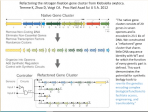 00:34:00
00:34:00
Synthetic Biology for Genetic Engineering in the 21st Century
Synthetic biologists seek to design, build, and test novel biological systems. We have chemically synthesized a bacterial genome (Mycoplsama mycoides, 1078Kb) and brought it to life by transplantation into the cytoplasm of a related species. We are....
More details | Watch now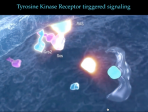 00:39:00
00:39:00
You can see a lot by observing: Optical Microscopy 2.0
Biological research and medicine were transformed by the invention and improvement of the optical microscope. Since the early 1990s, there has been another revolution in optical imaging, and manipulation of individual biological molecules and bio-mo....
More details | Watch now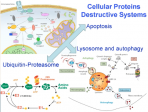 00:32:00
00:32:00
The Revolution of Personalized Medicine: Are We Going to Cure All Diseases and at What Price?
Many important drugs such as penicillin, aspirin, or digitalis, were discovered by serendipity - some by curious researchers who accidentally noted a "strange" phenomenon, and some by isolation of active ingredients form plants known for centuries to....
More details | Watch now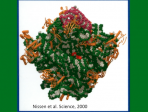 00:28:00
00:28:00
From the Structure of the Ribosome to New Antibiotics
Structural studies of the ribosome exemplify the evolution of structural studies in cell biology from the early negatively stained images of macromolecular assemblies in whole cells, to a detailed atomic understanding of the mechanisms of action of a....
More details | Watch now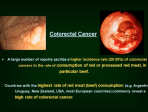 00:31:00
00:31:00
Infections Linked to Human Cancers: Mechanisms and Synergisms
Slightly more than 20% of the global cancer incidence is presently being linked to viral, bacterial, or parasitic infections. The mechanisms by which these agents mediate malignant transformation differ substantially. Some contribute directly, freq....
More details | Watch now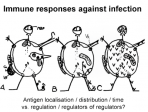 00:32:00
00:32:00
Why Do We Not Have a Vaccine Against HIV or Tuberculosis?
Analysis of the immune system is fascinating and progressing rapidly. As a field of medical enquiry, it has however, drifted and turned purely academic. This is because interest and appreciation of protective immunity in infectious disease medicine....
More details | Watch now 00:32:00
00:32:00
On The Road Toward an HIV Cure
Since the first cases of AIDS in 1981 and the identification of its etiological agent in 1983, much progress has been made in both the development of tools to prevent and treat HIV infection and the access to these tools. In particular, the wide arr....
More details | Watch now 00:30:00
00:30:00
Inheritance from Teratomas
The techniques and concepts that have resulted in the identification and isolation of embryonic stem cells have come from studies with mouse teratocarcinomas. Embryonic stem cells isolated from normal mouse embryos may be grown in tissue culture and....
More details | Watch now 00:31:00
00:31:00
Forging a Genetic Paradigm for Cancer
It is now axiomatic that, no matter what its causes, cancer ultimately arises from the malfunction of genes. A number of clues prefigured this paradigm: the persistence of the malignant phenotype through countless cell divisions; the mutagenicity of....
More details | Watch now





















